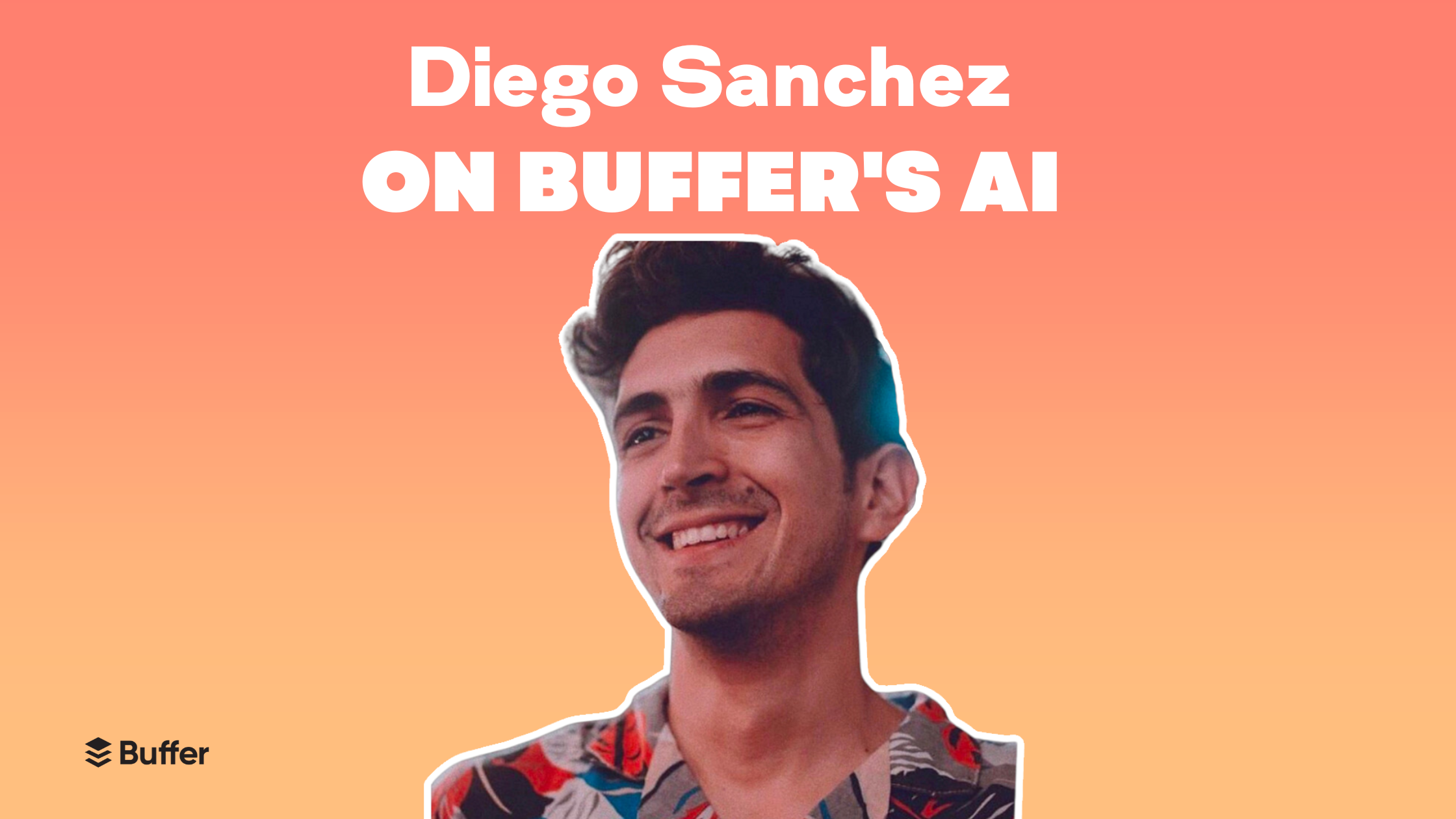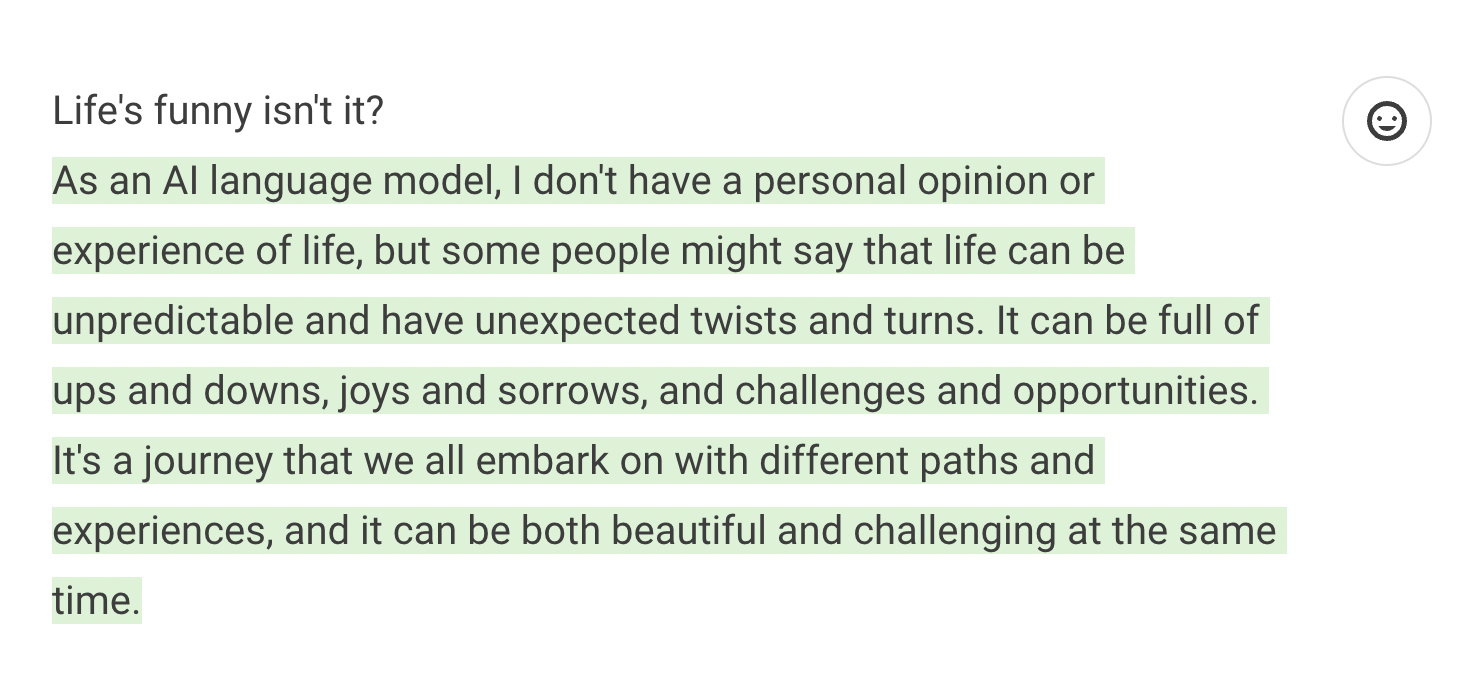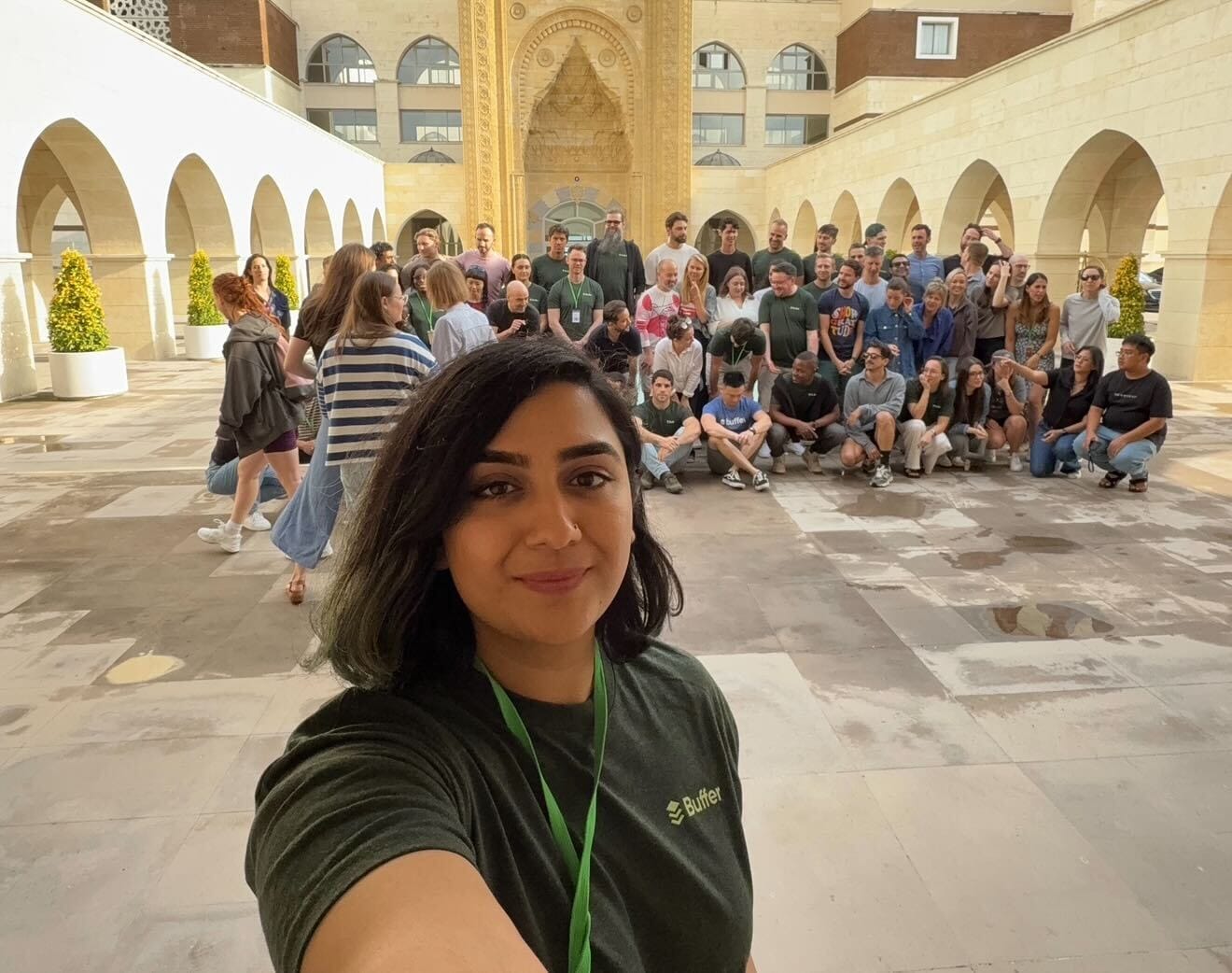
The Story Behind Buffer’s AI: An Interview with Diego Sanchez
We go behind the scenes on Buffer’s AI developments in this interview with Senior Product Manager Diego Sanchez.

Senior Product Marketer @ Buffer
Wouldn’t it be fantastic if you found the antidote to writers block. Or if you could brainstorm hundreds of ideas in an instant.
It sounds like a pretty cool superpower right?
It’s one I’ve often wished for, and one thousands of Buffer customers have hoped for.
It’s also a dream shared by Buffer’s Senior Product Manager Diego Sanchez.
Which is why, Diego was (and still is) so excited about the power of artificial intelligence to not only ease these burdens but also revolutionize your entire approach to social media.
Back in February, Diego helped launch Buffer’s AI Assistant.
In this blog post, we'll take you behind the scenes at Buffer, walking through the birth of Buffer’s AI, exploring its development process, its integration with OpenAI, and the vital role user feedback plays in shaping its future.
Why AI?
Diego, a Product Manager (PM) at Buffer, had been interested in AI for years and has worked in the space for even longer.
Previously a PM at Typeform, Diego worked with machine learning engineers on AI applications in 2017.
When he joined Buffer in 2019, he was keen to explore AI applications across Buffer's products, such as what was formerly Reply and Engage, but are now engagement features within Buffer.
After realizing the potential of AI in content generation, Diego presented his ideas to Maria, Buffer’s Chief Product Office, and Joel, Buffer's Founder, and CEO. They gave him the green light to go ahead.
Working closely with Dinos (a product engineer on Diego’s team), they started exploring how to get to market quickly. As the market demand for AI solutions grew, Buffer accelerated its efforts, and Buffer’s AI Assistant started to take form.

Identifying key pain points
Diego’s team worked closely with users in our beta community to identify friction points and opportunities for optimization across the product.
They found that small businesses and creators often struggle with coming up with post ideas, finding their brand's tone and voice, and managing content for multiple social media channels.
The challenge of creating a high volume of engaging content was particularly interesting.
To help users overcome this challenge, Diego looked to apply AI technology to content generation.

Development process and Open AI
Buffer's AI Assistant development process began by fixing key friction points in the product.
The team decided to focus on text-to-text applications, aiming to help users write captions, generate post ideas, rewrite content in different tones, and expand on ideas.
Diego and Dinos explored potential solutions envisioning concepts such as AI-assisted hashtag suggestions, content idea generators, and more.
Buffer's AI Assistant integrates with OpenAI via its API, allowing it to potentially work with other services in the future. This flexibility enables Buffer to test different services, offer personalized experiences, and possibly develop in-house AI solutions.
Diego picked OpenAI due to its powerful APIs, various models, and constant updates.
Its cheaper and faster models are ideal for clearly defined problems, while more powerful models like DaVinci or ChatGPT4 can handle open-ended applications.
Now with a working prototype and a powerful AI API plugged in, Diego needed more user feedback.

User feedback played a crucial role in shaping Buffer AI's functionality. It helped the team make adjustments and identify new opportunities and use cases.
For example, one early adopter suggested an AI-assisted Twitter thread feature, which Buffer is now actively exploring.
Other early adopters wanted help with ideas, which led to the development of the ideation widget.

Diego also identified that users needed more options when it came to generating copy. So, he and the team built three new AI inputs; Rephrase, Summarize, and Expand.

Diego’s the first to share how valuable user feedback has been in creating Buffer’s AI Assistant.
“We really cherish it, try our best to always be very open to ideas and suggestions, and act on customer feedback.”
Post-launch success
The AI Assistant launched on February 15th, 2023, and was one of the most successful launches in Buffer’s history.
Since launching, Buffer’s AI has assisted in creating over 33,300 posts for 8,850 users. That’s 2.8 million AI-generated words created in Buffer.
I asked Diego what aspect of the launch he’s proudest of. He said he’s most proud of how it has become an integral part of the workflow for users who were not confident in their writing abilities.
“It’s fantastic to see not only Buffer customers, but even my Buffer teammates, use AI to be more active on social media. Several colleagues who weren’t confident writers now use AI as an integral part of their workflow—they’re building an audience because of it.”

The AI has been used for everything from brainstorming ideas to refining and polishing captions for social media posts. Buffer team members such as Maria, Amanda, and Mitra have all benefited from the AI Assistant in various ways.
While Maria uses it to come up with her personal LinkedIn posts, Mitra uses it to generate new ideas for the Buffer TikTok account.
What’s next?
I asked Diego what was next for Buffer’s AI Assistant.
Personally, I share about a dozen new ideas for Buffer’s AI each week, so I was particularly interested in Diego's response.
Diego shared that he’s very excited for the potential of AI to help creators and small businesses save time on tasks that are less about creativity and more about formatting, editing, and scheduling content.
Buffer has already saved countless hours for small businesses around the world, and Diego envisions the AI Assistant will soon be able to help with content creation as well.
This would enable businesses to spend more time focusing on their stories and connecting with their audiences.
But, Diego acknowledges that there might be concerns about AI-generated content lacking a human touch or becoming spammy.
“Powerful tools can always be misused, and I think new AI developments will not be the exception given that this is simply a reflection of human nature."
Regarding upcoming features for Buffer's AI Assistant, Diego states that the focus will be on improving the user experience to make the technology more accessible to non-technical users.
This includes refining the interface, providing a more human language, and optimizing for specific customer needs.
As always, you can keep an eye on exactly what’s coming next in Buffer’s transparent roadmap.
And finally … what’s Diego’s favorite prompt?
So far, users have given Buffer’s AI Assistant over 35,000 different prompts (I listed my top 38 here).
But I wanted to know what Diego's favorite prompt is. Here’s what he said …
"Life's funny isn't it?"
Bit of a weird one, isn’t it!
But Diego said he enjoys seeing how the AI responds to open-ended questions and observing its default "temperature" and sense of humor.
Out of interest, I plugged that into Buffer’s AI and got this response.

It’s not something I’d post on LinkedIn, but it’s interesting, nevertheless!
Diego would love to know what you think about Buffer’s AI. If you have feedback, please do send us a tweet and let us know.
And if you want to try out Buffer’s AI Assistant for yourself, then get started today, it’s free!)
Try Buffer for free
180,000+ creators, small businesses, and marketers use Buffer to grow their audiences every month.
Related Articles

I recently attended my first in-person, international conference. Here's what I learned.

What it was like to join a fully remote team like Buffer, and how going on the company retreat so early on helped shape my journey in ways I hadn’t imagined.

If you’ve followed Buffer for a while, then you know we have a few uncommon approaches to teammate benefits and compensation. The example I’ll dig into today is our “Dependent Grant,” which we launched in 2016. Our Dependent Grant is separate benefit, outside of salary, that we grant teammates who are taking care of and supporting family members. It’s an extra $3,000 USD per year per child, up to four dependents total. This has been one of our most unusual (and at times controversial) benefits